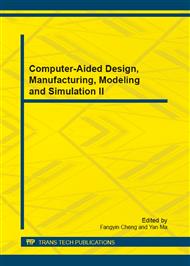p.1204
p.1209
p.1214
p.1220
p.1226
p.1231
p.1237
p.1241
p.1246
Labview Based Experimental System Design for the Investigation of Magnetorheologic Fluids Inductance
Abstract:
A Magnetorheologic fluid is a kind of intelligent material with high performance, its inductance has an important impact on its manufacturing and application, and thus it is important to investigate its inductance. This paper mainly introduced the method using labview to develop an experimental system to investigate magnetorheologic fluids inductance, and built such a system. It also discussed the composition and function, and designed the experimental procedures. We detected and analysis magnetorheologic fluids inductance under different conditions. This system utilized software to implement realtime sampling of time domain signals, display frequency domain signal and some other signal analysis function. Experimental results indicated that this system is feasible.
Info:
Periodical:
Pages:
1226-1230
Citation:
Online since:
December 2012
Authors:
Price:
Сopyright:
© 2013 Trans Tech Publications Ltd. All Rights Reserved
Share:
Citation:


